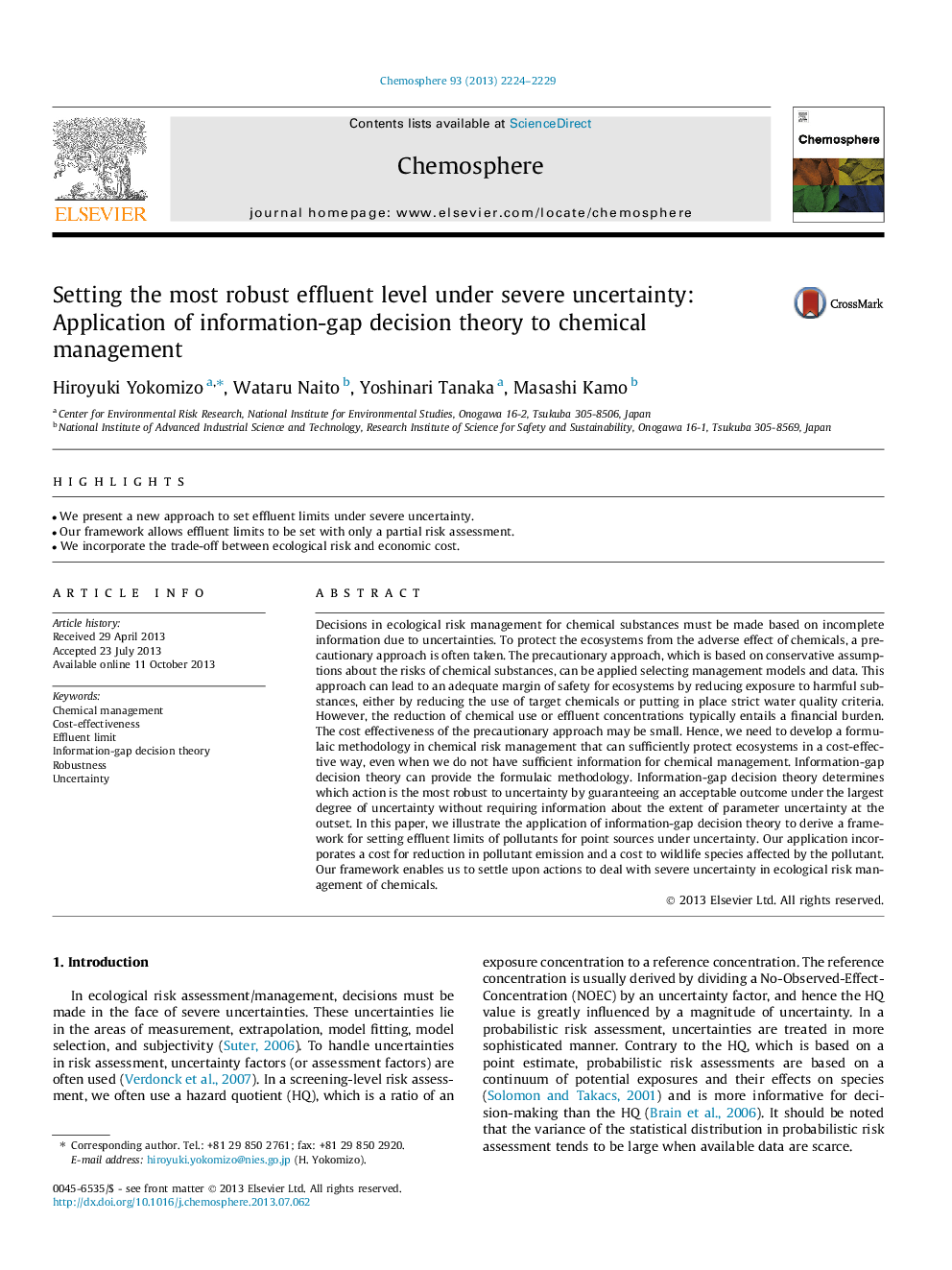| کد مقاله | کد نشریه | سال انتشار | مقاله انگلیسی | نسخه تمام متن |
|---|---|---|---|---|
| 6309558 | 1307453 | 2013 | 6 صفحه PDF | دانلود رایگان |
- We present a new approach to set effluent limits under severe uncertainty.
- Our framework allows effluent limits to be set with only a partial risk assessment.
- We incorporate the trade-off between ecological risk and economic cost.
Decisions in ecological risk management for chemical substances must be made based on incomplete information due to uncertainties. To protect the ecosystems from the adverse effect of chemicals, a precautionary approach is often taken. The precautionary approach, which is based on conservative assumptions about the risks of chemical substances, can be applied selecting management models and data. This approach can lead to an adequate margin of safety for ecosystems by reducing exposure to harmful substances, either by reducing the use of target chemicals or putting in place strict water quality criteria. However, the reduction of chemical use or effluent concentrations typically entails a financial burden. The cost effectiveness of the precautionary approach may be small. Hence, we need to develop a formulaic methodology in chemical risk management that can sufficiently protect ecosystems in a cost-effective way, even when we do not have sufficient information for chemical management. Information-gap decision theory can provide the formulaic methodology. Information-gap decision theory determines which action is the most robust to uncertainty by guaranteeing an acceptable outcome under the largest degree of uncertainty without requiring information about the extent of parameter uncertainty at the outset. In this paper, we illustrate the application of information-gap decision theory to derive a framework for setting effluent limits of pollutants for point sources under uncertainty. Our application incorporates a cost for reduction in pollutant emission and a cost to wildlife species affected by the pollutant. Our framework enables us to settle upon actions to deal with severe uncertainty in ecological risk management of chemicals.
Journal: Chemosphere - Volume 93, Issue 10, November 2013, Pages 2224-2229
